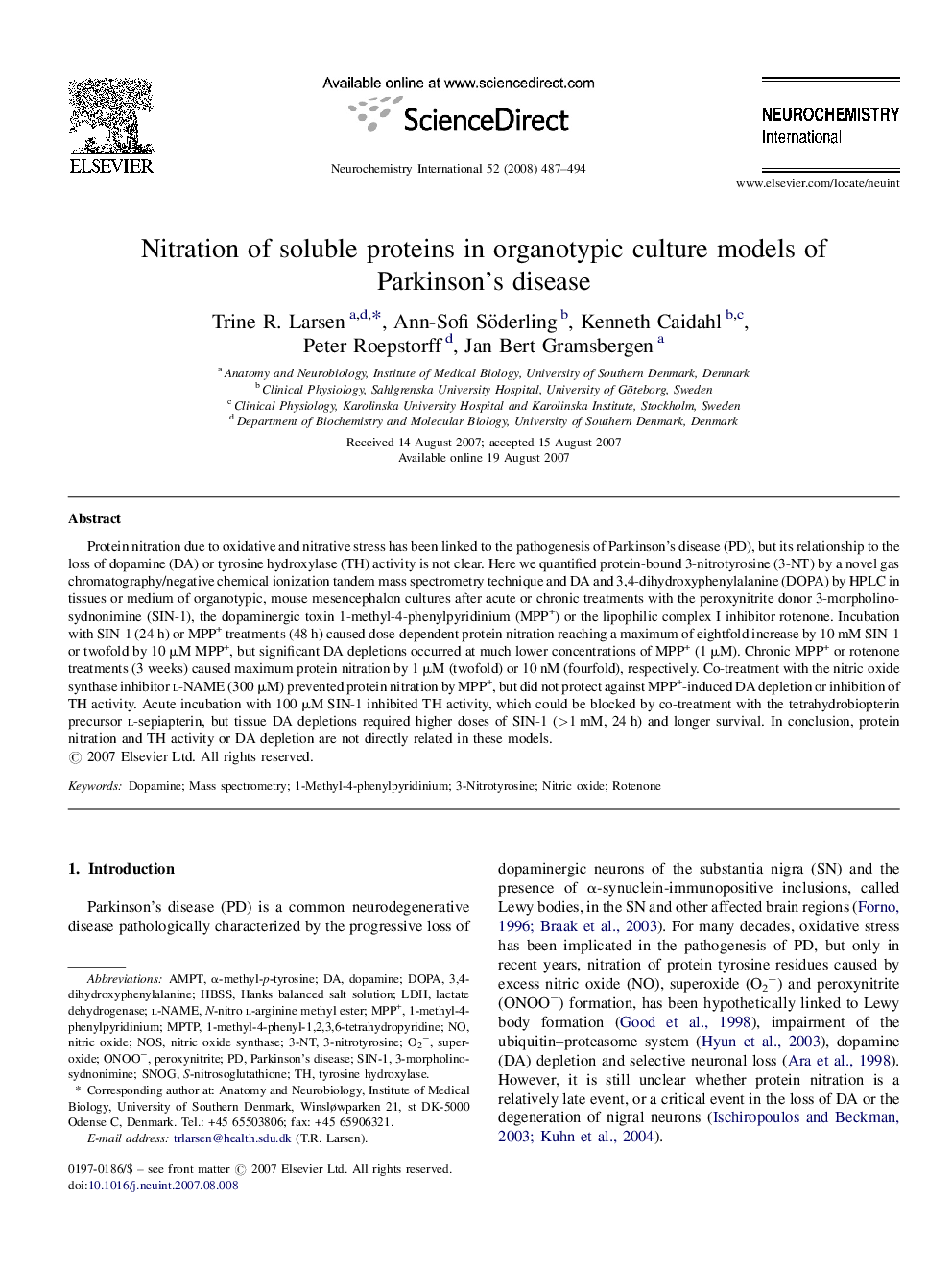| Article ID | Journal | Published Year | Pages | File Type |
|---|---|---|---|---|
| 2201978 | Neurochemistry International | 2008 | 8 Pages |
Protein nitration due to oxidative and nitrative stress has been linked to the pathogenesis of Parkinson's disease (PD), but its relationship to the loss of dopamine (DA) or tyrosine hydroxylase (TH) activity is not clear. Here we quantified protein-bound 3-nitrotyrosine (3-NT) by a novel gas chromatography/negative chemical ionization tandem mass spectrometry technique and DA and 3,4-dihydroxyphenylalanine (DOPA) by HPLC in tissues or medium of organotypic, mouse mesencephalon cultures after acute or chronic treatments with the peroxynitrite donor 3-morpholino-sydnonimine (SIN-1), the dopaminergic toxin 1-methyl-4-phenylpyridinium (MPP+) or the lipophilic complex I inhibitor rotenone. Incubation with SIN-1 (24 h) or MPP+ treatments (48 h) caused dose-dependent protein nitration reaching a maximum of eightfold increase by 10 mM SIN-1 or twofold by 10 μM MPP+, but significant DA depletions occurred at much lower concentrations of MPP+ (1 μM). Chronic MPP+ or rotenone treatments (3 weeks) caused maximum protein nitration by 1 μM (twofold) or 10 nM (fourfold), respectively. Co-treatment with the nitric oxide synthase inhibitor l-NAME (300 μM) prevented protein nitration by MPP+, but did not protect against MPP+-induced DA depletion or inhibition of TH activity. Acute incubation with 100 μM SIN-1 inhibited TH activity, which could be blocked by co-treatment with the tetrahydrobiopterin precursor l-sepiapterin, but tissue DA depletions required higher doses of SIN-1 (>1 mM, 24 h) and longer survival. In conclusion, protein nitration and TH activity or DA depletion are not directly related in these models.
